SPUR & photo-elicitation, two innovative methodologies to better understand women suffering from vasomotor symptoms associated with menopause
You are entering Observia’s website.
This webpage provides additional information about the methods we used to better understand the daily lives of menopausal women experiencing vasomotor symptoms (VMS).
What is SPURTM?
SPUR is a dynamic behavioral diagnostic tool developed by Observia that generates 18 data points per individual to better understand the reasons behind non-adherence of populations with chronic symptoms. Aggregating decades of proven theories in behavioral sciences, SPUR model and tool have been scientifically validated in a four-year international research protocol and eight publications.
SPUR assesses the risk of non-adherence of individuals and identifies which of 13 behavioral drivers are likely underlying non-adherence. SPUR stands for Social, Psychological, Usage, and Rational - four over-arching themes that influence health behavior.
A correlation between SPUR non-adherence risk and Medication Possession Ratio (MPR) was found in a number of studies, and the ability of SPUR to predict hospital admissions and early readmission has been readily demonstrated.
For more information on the SPUR research plan or to freely access SPUR for use in your research project, visit our dedicated website.
What did SPUR bring to this project?
We used SPUR to identify the behavioral profiles of 90 women at different stages of menopause in Germany, Italy, the US and the UK. The studied population included both treated (hormone therapy [HT] or over the counter medication [OTC]) and untreated women.
SPUR items were integrated into an online questionnaire that also collected socio-demographic and medical data from both treated and untreated patients. SPUR was used to assess HT adherence (for treated women) or menopause coping strategies (for untreated women). Answer data was computed through Observia's algorithms and further analyzed.
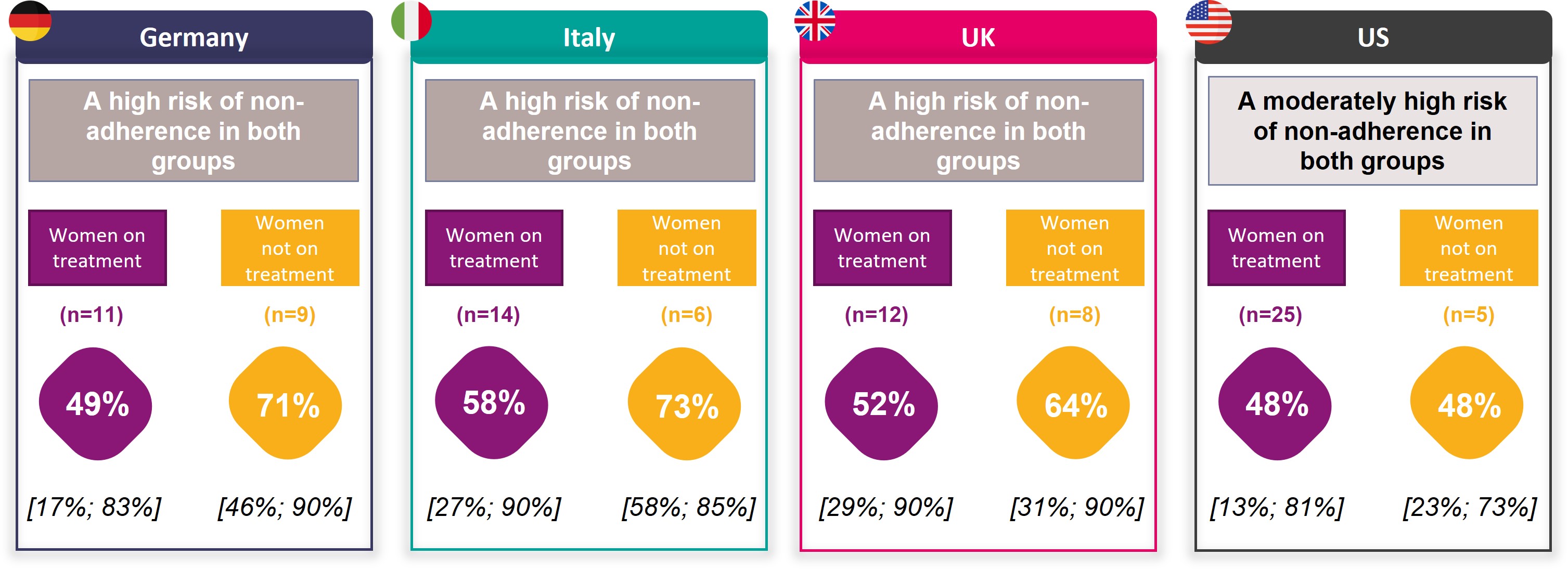
In the four investigated countries, the results show that there is a moderately high risk of non-adherence for both treated and untreated women.
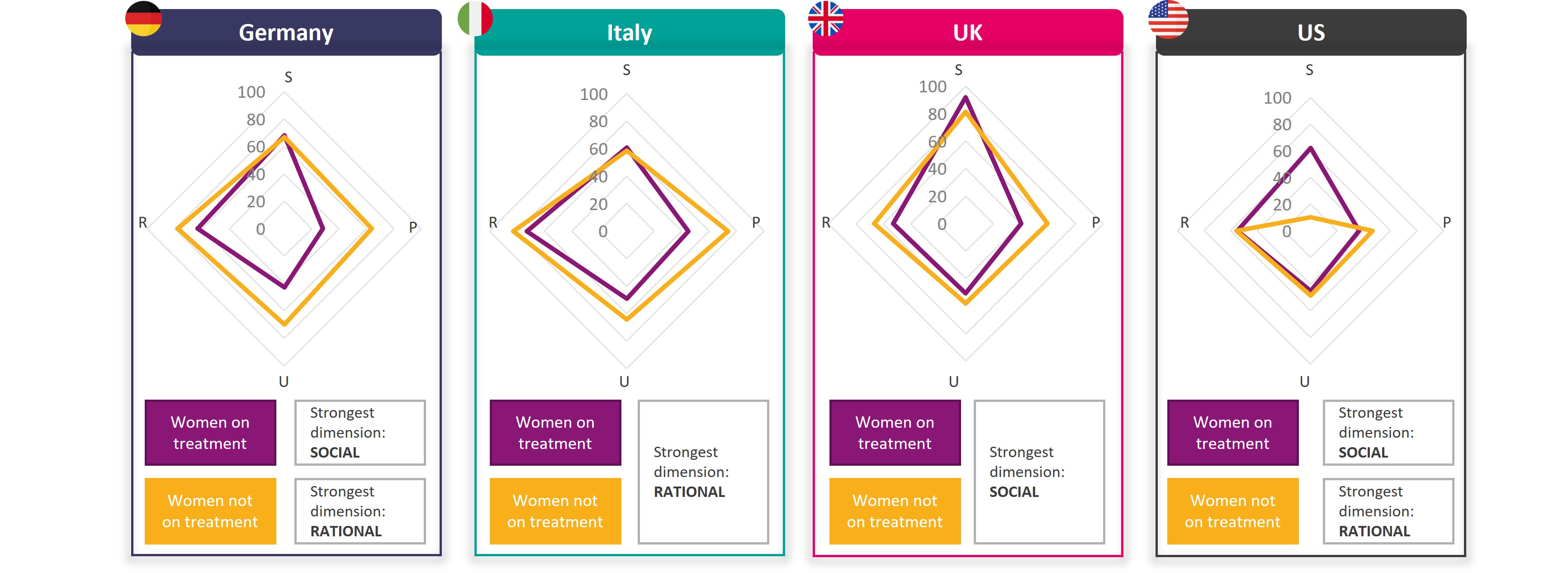
Overall, the Social and Rational dimensions had the largest impact on adherence in both treated and untreated women. The individual drivers of adherence in the two groups may differ.
The importance of the Social dimension (with the notable exception of untreated women in the US) suggests that women feel discussing menopause is still taboo.
The importance of the Rational dimension reflects common themes from the interviews; treated women commonly mentioned that they were concerned about the elevated cancer risk associated with HT, leading them to discontinue their treatment. Women 'rationalize' their adherence decisions based on their perceived risk–benefit ratio.
Untreated women also had a high risk of non-adherence to their coping strategies based on the Rational dimension. This reflects women's testimonies from the interviews, in which they discussed feeling that their coping strategies were inefficient and may not be worth the effort.
A more detailed analysis of SPUR drivers was performed by crossing data with patients interviews results, see below the paragraph Cross-analysis of raw data to generate actionable patients insights.
Photo-elicitation: The unlimited power of visuals
Interview is an established and effective method of understanding a person's experience of living with symptoms, but has some limitations.
The use of pictures as a method of communication and as a research tool has a long history and can be incredibly effective, as demonstrated by the American photographer and anthropologist John Collier in 1967*. Photo-elicitation is a method of interview that uses images to elicit responses from subjects and gauge their thoughts and feelings.
At Observia, we ask participants to provide personal photos that reflect the impact of their condition on their daily lives and to comment on the images they share. Photo-elicitation is incredibly effective when aiming to understand participants' journeys holistically.
*Visual anthropology: photography as a research method. New York, Holt, Rinehart and Winston.
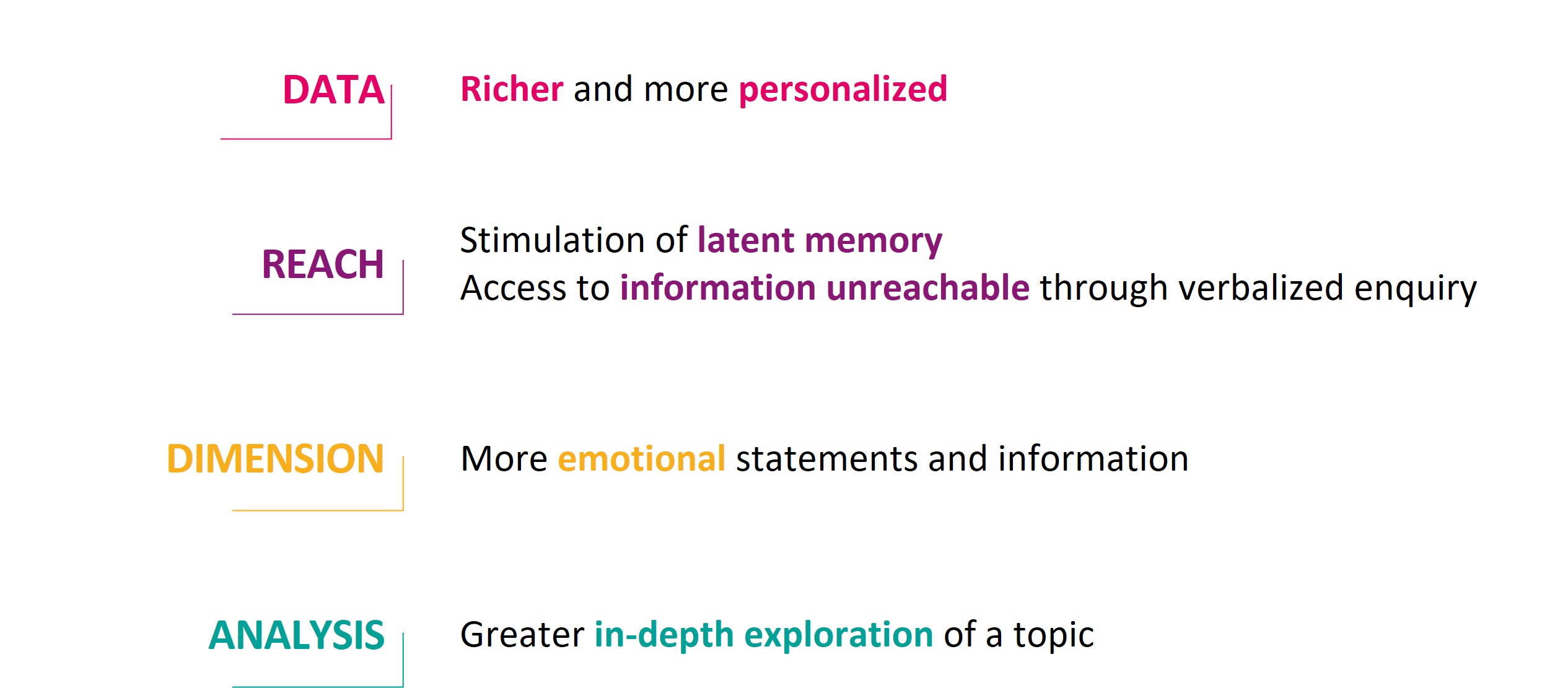
Read more on photo-elicitation
What did we learn from the women's pictures?
A total of 17 women living with severe menopause symptoms were interviewed using the photo-elicitation methodology. Interviews were conducted according to the following protocol:
- Women were informed about the photo-elicitation technique.
- They took pictures of things that they associate with menopause and shared these pictures with us before the interviews.
- During the interviews, women were asked to comment on their pictures and give more details.
- The photos and the testimonies were analyzed and common were identified.
The women shared information about some of the symptoms they faced, explaining how overwhelming their symptoms were and how they felt about them (the examples below are from German women).
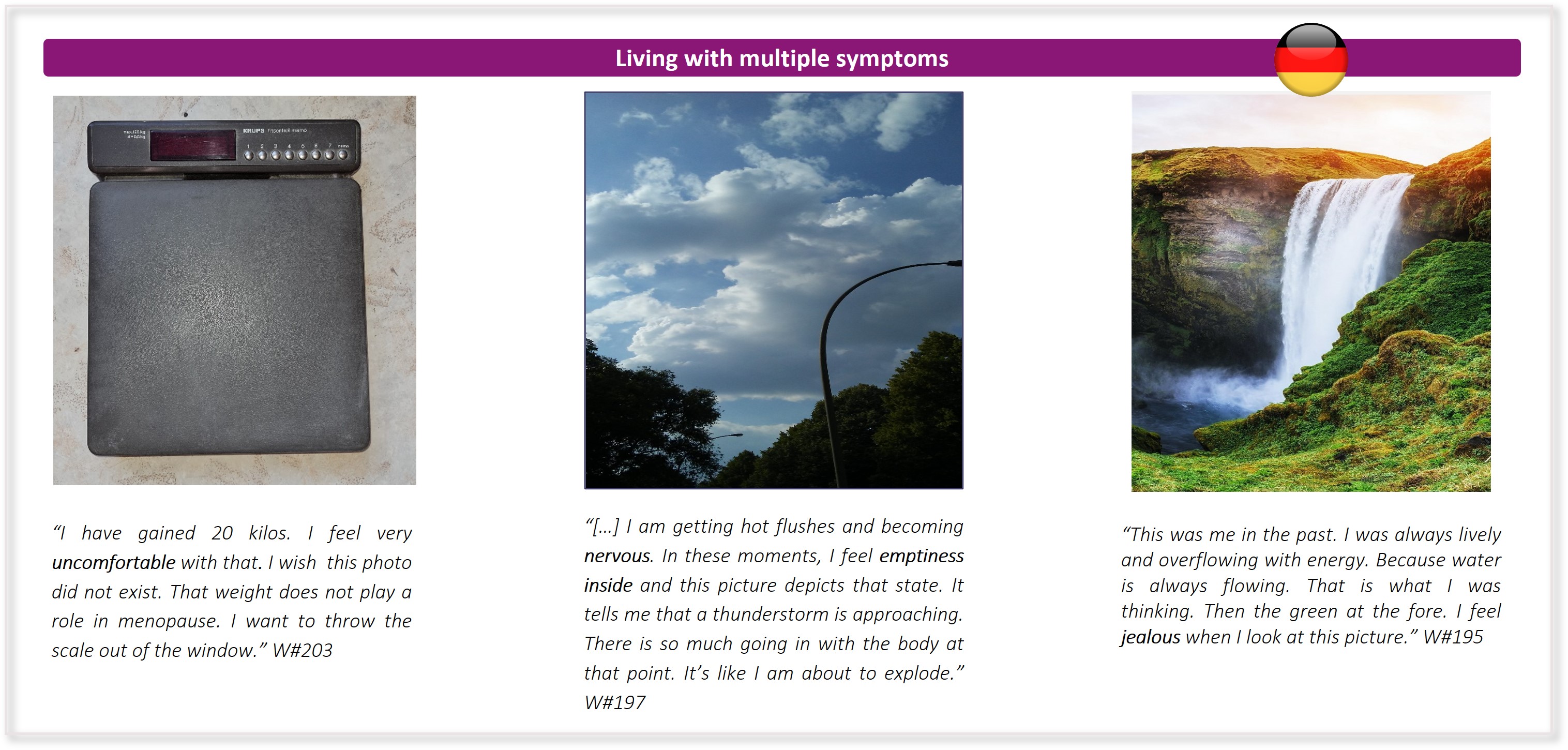
Many women with VMS expressed how omnipresent their symptoms were in their lives (the examples below are from women in the UK and USA). They shared their experience of the unpredictability that VMS cause and the strategies they must constantly use to manage them.
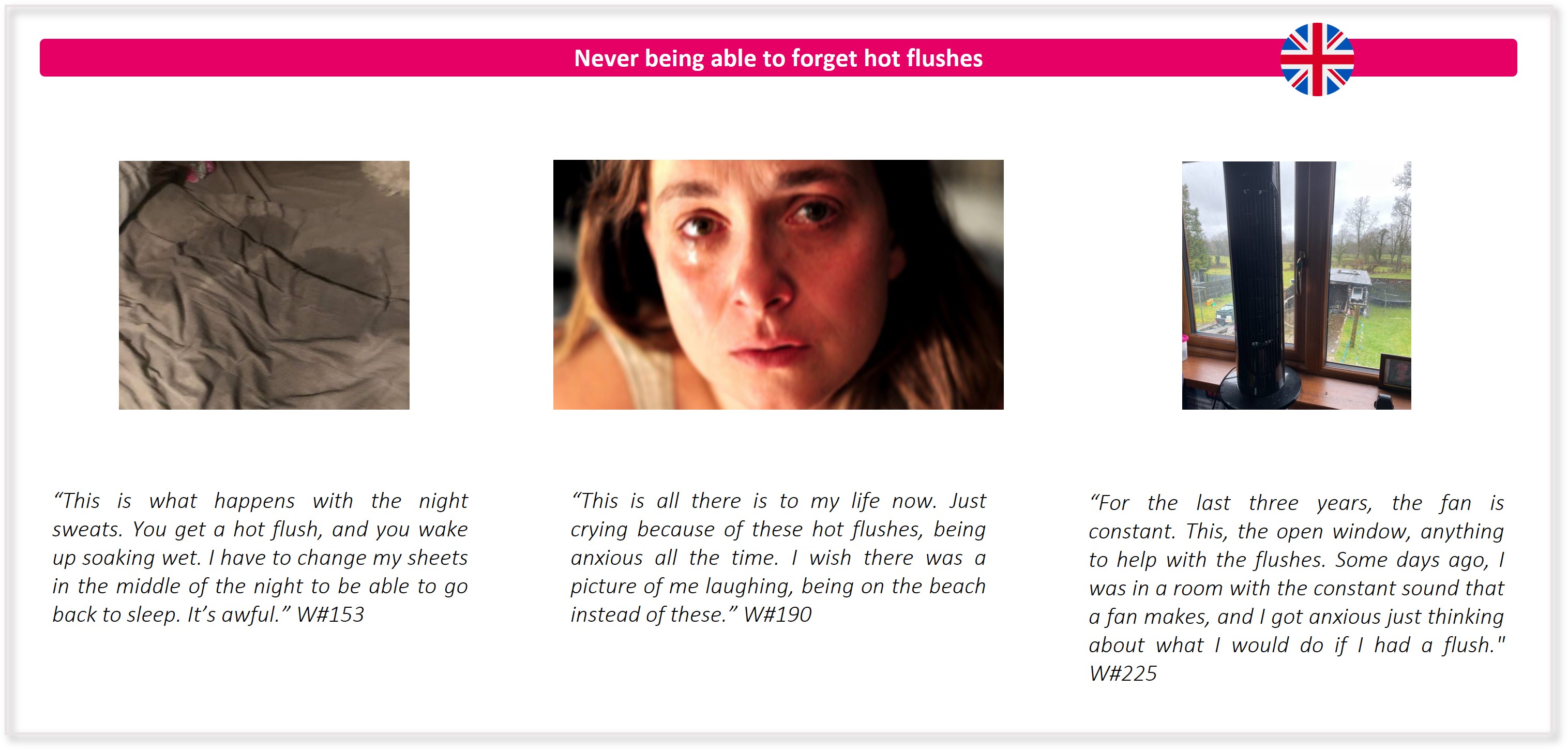
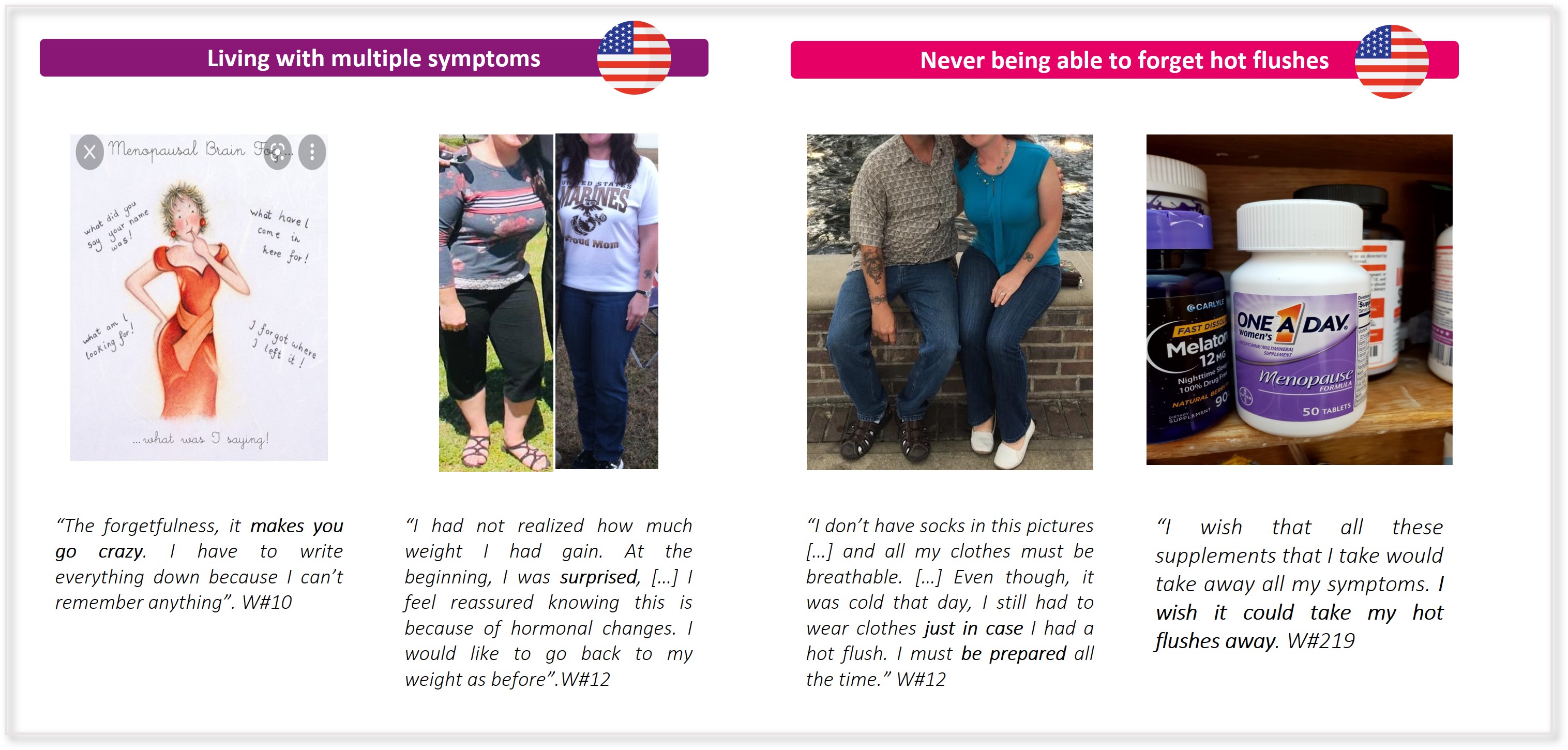
Some women described how omnipresent menopause was in their daily life and how they had to constantly either self-treat or learn to live with their symptoms (the below example features women from Italy).
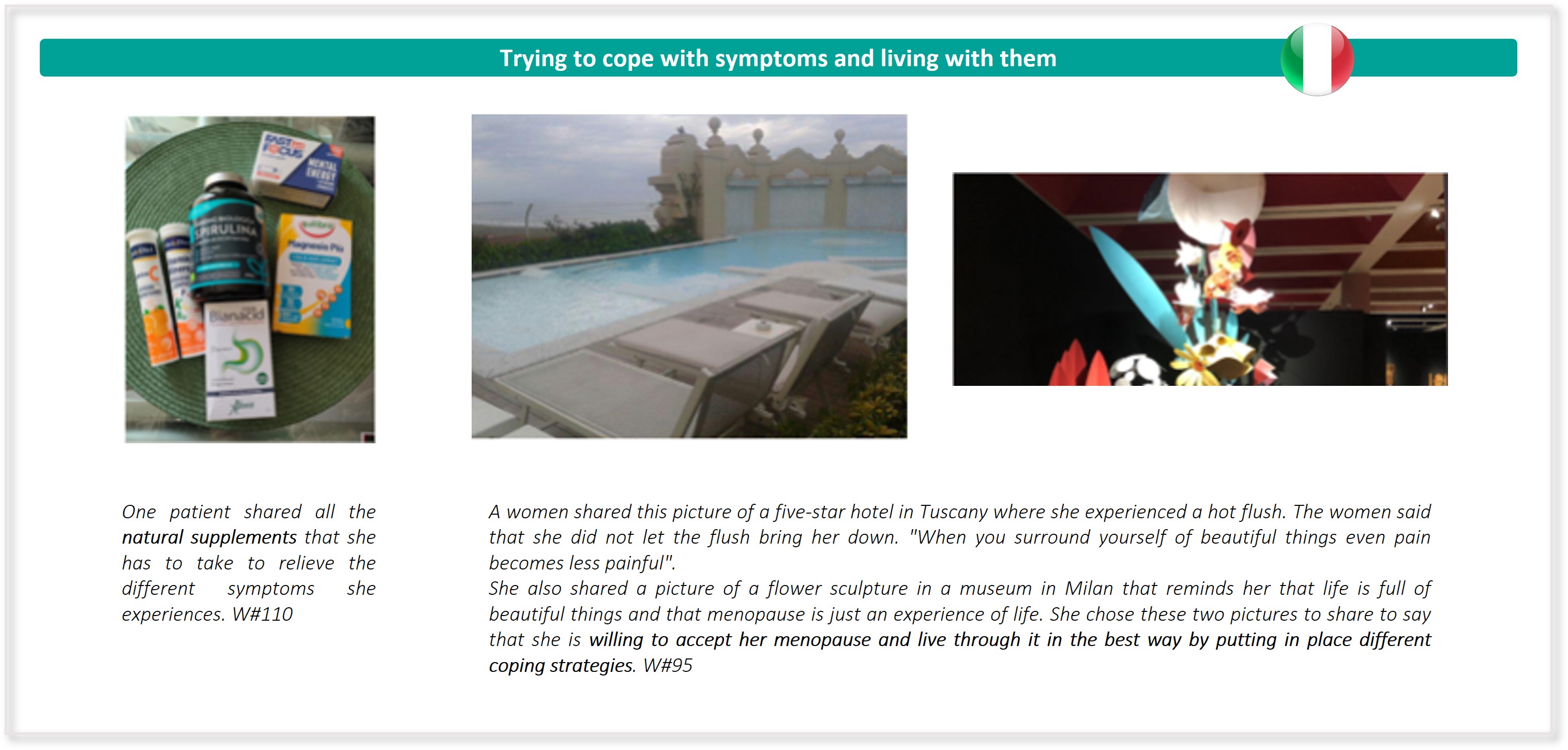
Cross-analysis of data to generate actionable patients insights
By comparing the SPUR results (dimensions, drivers) measured in an initial sample of treated and untreated women with the testimonies of a different group of women, we found that the two methods created a similar picture of women's experiences.
A cross-analysis of the results from each process confirmed the outcomes of the research.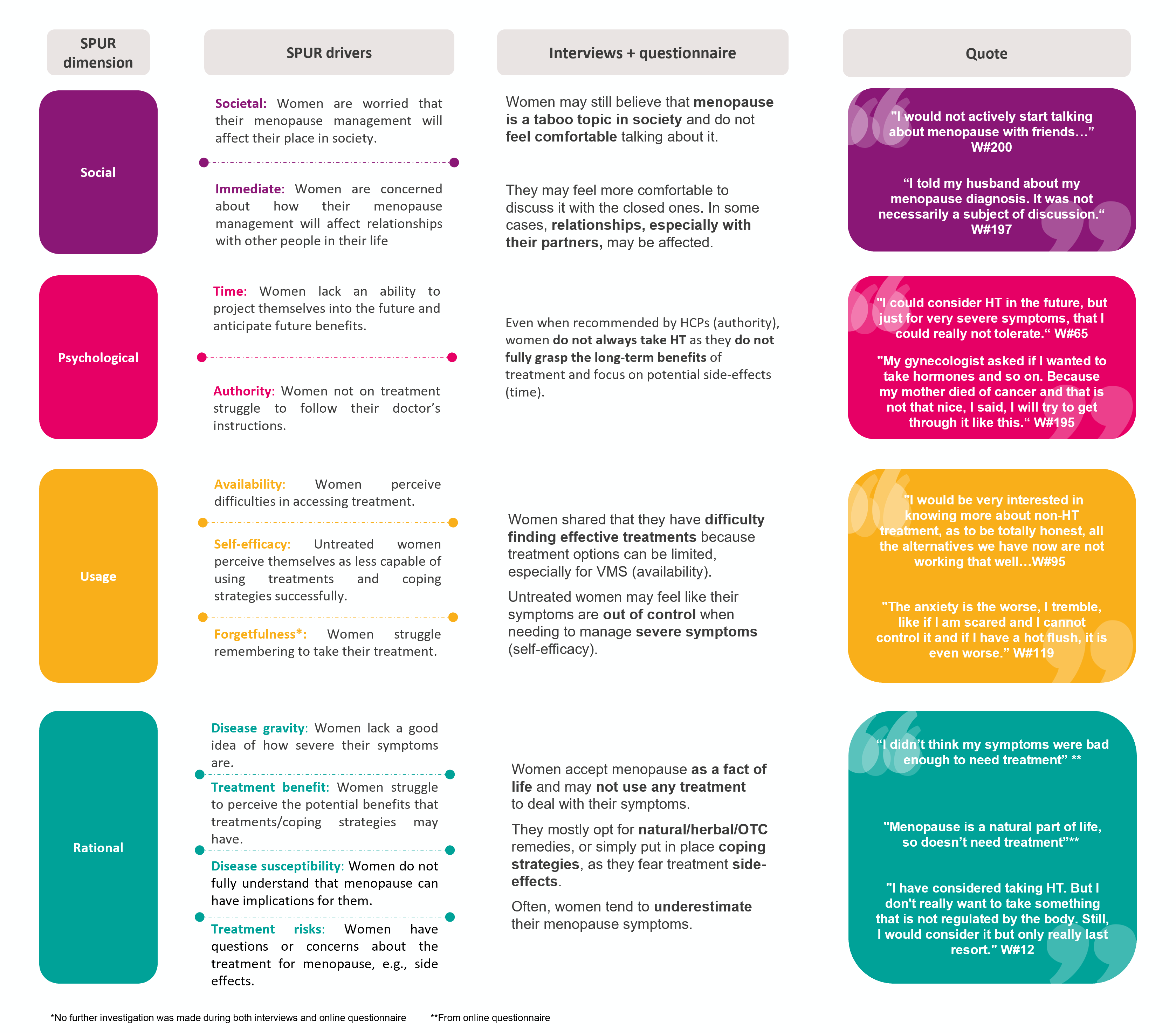
SPUR detected the main pain points reported by women with VMS. The online questionnaire and the individual photo-elicitation interviews yielded details and quotations that helped us to better understand the daily challenges women face.
These methodologies are fully complementary; they allowed access to precise, intimate, and genuine information from a sizeable sample of women from four different countries.
Conclusion
The use of two methodologies, SPUR and qualitative interviews, which included photo-elicitation, allowed a deeper understanding of the emotional and behavioral patterns of women going through menopause.
The approach described here is used across different therapeutic areas in other Observia projects, particularly those involving anthropological studies of patient populations.
